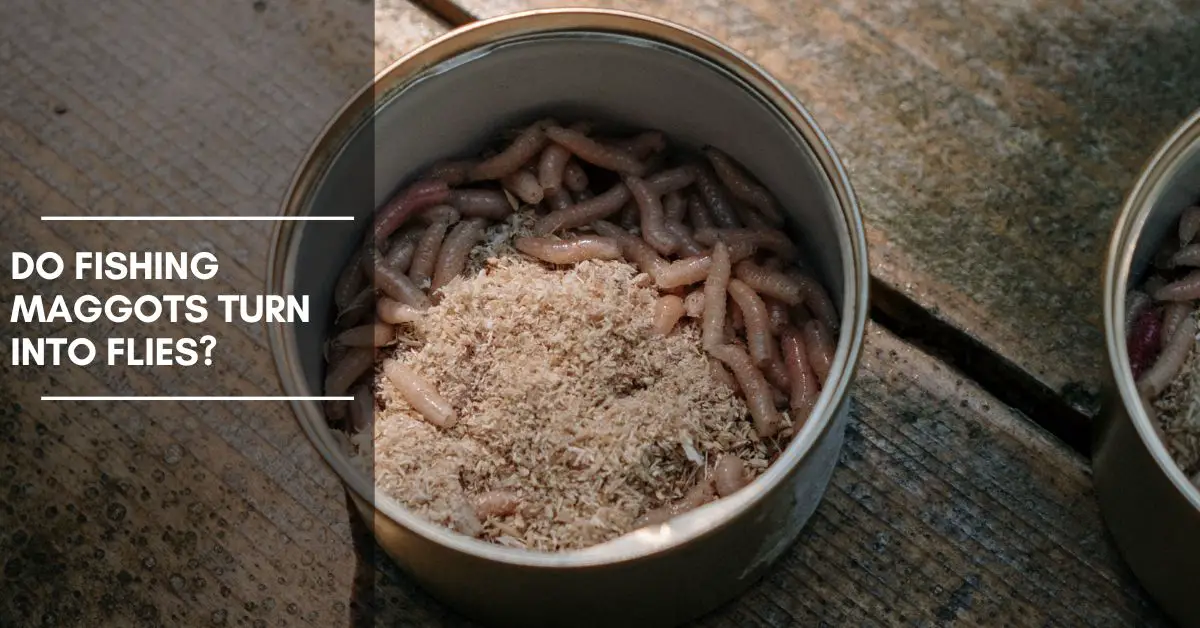Fishing enthusiasts and beginners alike have always been curious about the life cycle of the bait they use to catch fish. Maggots are a popular choice for many anglers due to their effectiveness in attracting various fish species.
In this article, I will discuss whether fishing maggots turn into flies, delving into their life cycle, and offering insights into the science behind this transformation. If you’ve ever been curious about the fate of your fishing maggots, this article is for you.
So let me give you the short answer, yes. Fishing maggots do turn into flies.
Maggots are the larval stage of various fly species, and they eventually transform into adult flies through a process called metamorphosis. Now that you have the answer, let’s take a closer look at the different stages of this process and how it affects your fishing bait.
Understanding the Life Cycle of a Maggot
1. The Egg Stage
The life cycle of maggots begins with the eggs laid by adult flies. Female flies are attracted to rotting organic matter, such as dead animals or decaying plants, where they lay their eggs. These eggs hatch into maggots within 24 hours, depending on the temperature and environmental conditions.
2. The Larval Stage
Once the eggs hatch, the maggots emerge as the larvae of the fly species. This is the stage where they are used as fishing bait. Maggots are voracious eaters, consuming the decomposing organic matter around them to grow and prepare for their next life stage. This stage lasts for about 3 to 7 days, depending on the species and environmental factors.
3. The Pupal Stage
After reaching a certain size, maggots enter the pupal stage. During this phase, they form a protective casing called a puparium, similar to a cocoon. Inside the puparium, maggots undergo a significant transformation, developing the physical characteristics of adult flies. This stage can last anywhere from 3 to 14 days, depending on the fly species and environmental conditions.
4. The Adult Stage
Finally, the adult fly emerges from the puparium, completing the metamorphosis. Adult flies are sexually mature and capable of reproducing, laying eggs, and beginning the life cycle all over again.
Maggots as Fishing Bait: Pros and Cons
Advantages of Using Maggots as Bait
Maggots are excellent bait for several reasons:
- Effectiveness: Maggots are highly attractive to a variety of fish species due to their scent and movement.
- Availability: Maggots can be purchased at most bait shops or grown at home with minimal effort.
- Versatility: They can be used for different fishing techniques, including float fishing, ledgering, and feeder fishing.
Disadvantages of Using Maggots as Bait
There are a few drawbacks to using maggots as fishing bait:
- Short shelf-life: Since maggots have a relatively short life cycle, they need to be used promptly or stored correctly to prevent them from turning into flies.
- Ethical concerns: Some anglers may feel uncomfortable using live maggots as bait for ethical reasons.
How to Store and Care for Your Maggots
To ensure your maggots remain in the larval stage and do not turn into flies, follow these storage tips:
- Keep them cool: Store maggots in a cool, dark place to slow down their metabolism and delay their transformation into flies.
- Use a breathable container: Maggots require oxygen to survive, so ensure your storage container has ventilation holes or is made of breathable material.
- Maintain cleanliness: Regularly clean the container and remove any dead maggots or debris to prevent foul odors and the growth of bacteria.
- Feed them, if necessary: If you plan to store maggots for an extended period, provide them with a small amount of bran or cornmeal to keep them fed and healthy.
Conclusion
In conclusion, fishing maggots do indeed turn into flies as they are in the larval stage of various fly species. Understanding their life cycle is essential for anglers who use maggots as bait to ensure they remain effective and don’t transform into flies before they can be used.
By properly storing and caring for your maggots, you can prolong their larval stage and maintain their usefulness as fishing bait.
Frequently Asked Questions (FAQs)
1. How long does it take for maggots to turn into flies?
The time it takes for maggots to turn into flies depends on the species and environmental conditions, but generally, the entire life cycle takes around 10 to 21 days.
2. Can I prevent maggots from turning into flies?
While you cannot stop the natural life cycle of maggots, you can delay their transformation by keeping them cool, providing a clean environment, and ensuring they have enough food.
3. Are there any alternatives to using live maggots as bait?
Yes, there are several alternatives, such as artificial maggots, worms, or other types of bait like sweetcorn and bread.
4. Are maggots harmful to humans?
Maggots are not harmful to humans when handled properly. However, it is essential to wash your hands thoroughly after handling maggots to prevent the spread of bacteria.
5. Can maggots be used for all types of fish?
Maggots are effective in attracting various fish species, including carp, trout, and panfish. However, some fish species may prefer different types of bait, so it’s essential to research the preferred bait for the specific fish you are targeting.


